V4 Motorcycles that Beat to Their Own Drum
Excess and character define these powerhouses with a surprisingly long history.
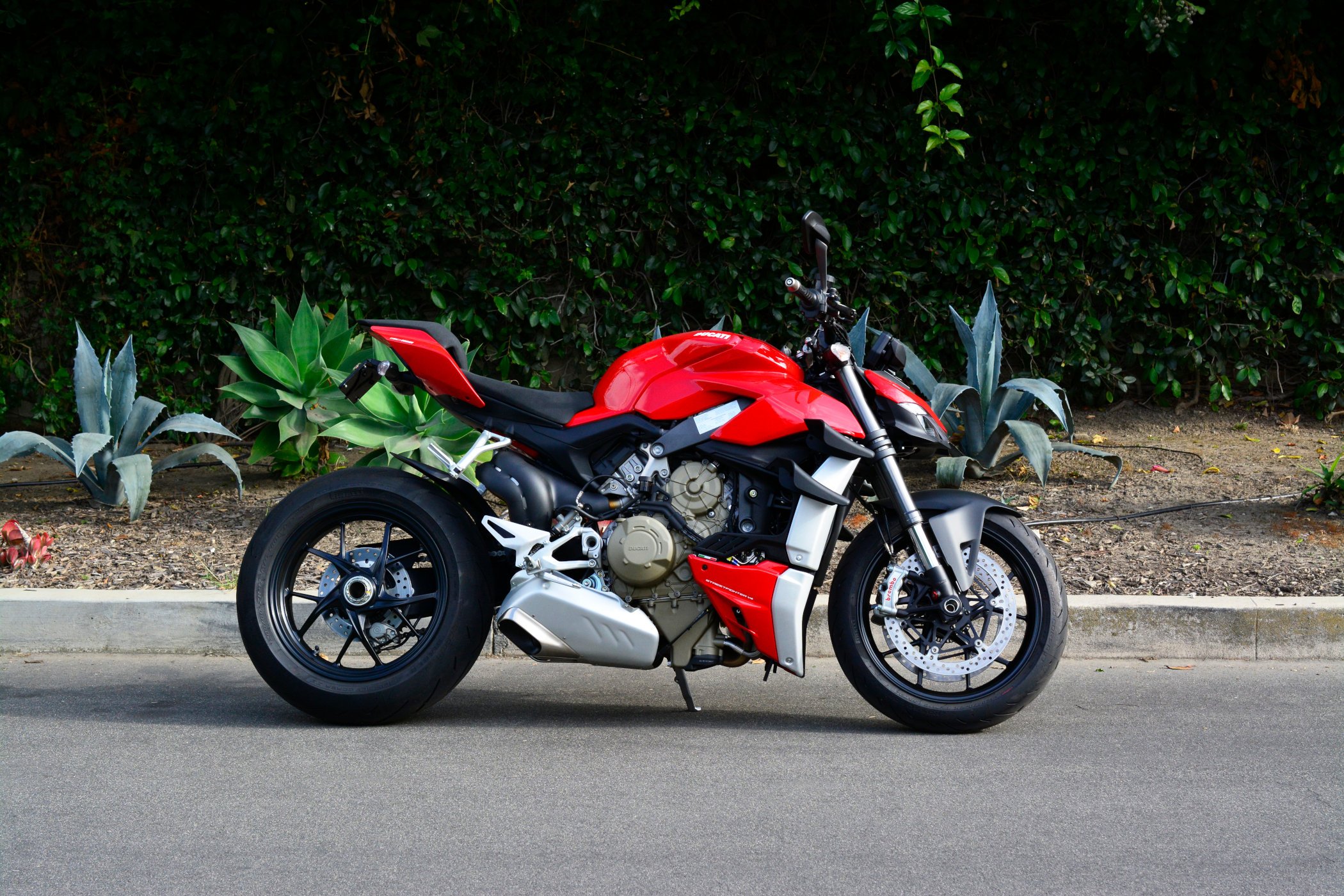
Despite increasingly strict regulations like EURO 5 emissions and decibel limits, we’re in a golden age of motorcycles. 200+ horsepower engines are no longer uncommon in bikes that an average Joe can buy, which was unthinkable until the last decade or so. Technology, engineering innovation and a bit of sorcery have allowed motorcycles to evolve into superbikes that were mere daydreams in the recent past. Among the most impressive are the V4 heavyweights, pushing out both intense power and loads of character with a symphony of growls that even the strictest regulations can’t ruin. V4 bikes have a surprisingly long history, going back almost a century and have always represented power and excess.
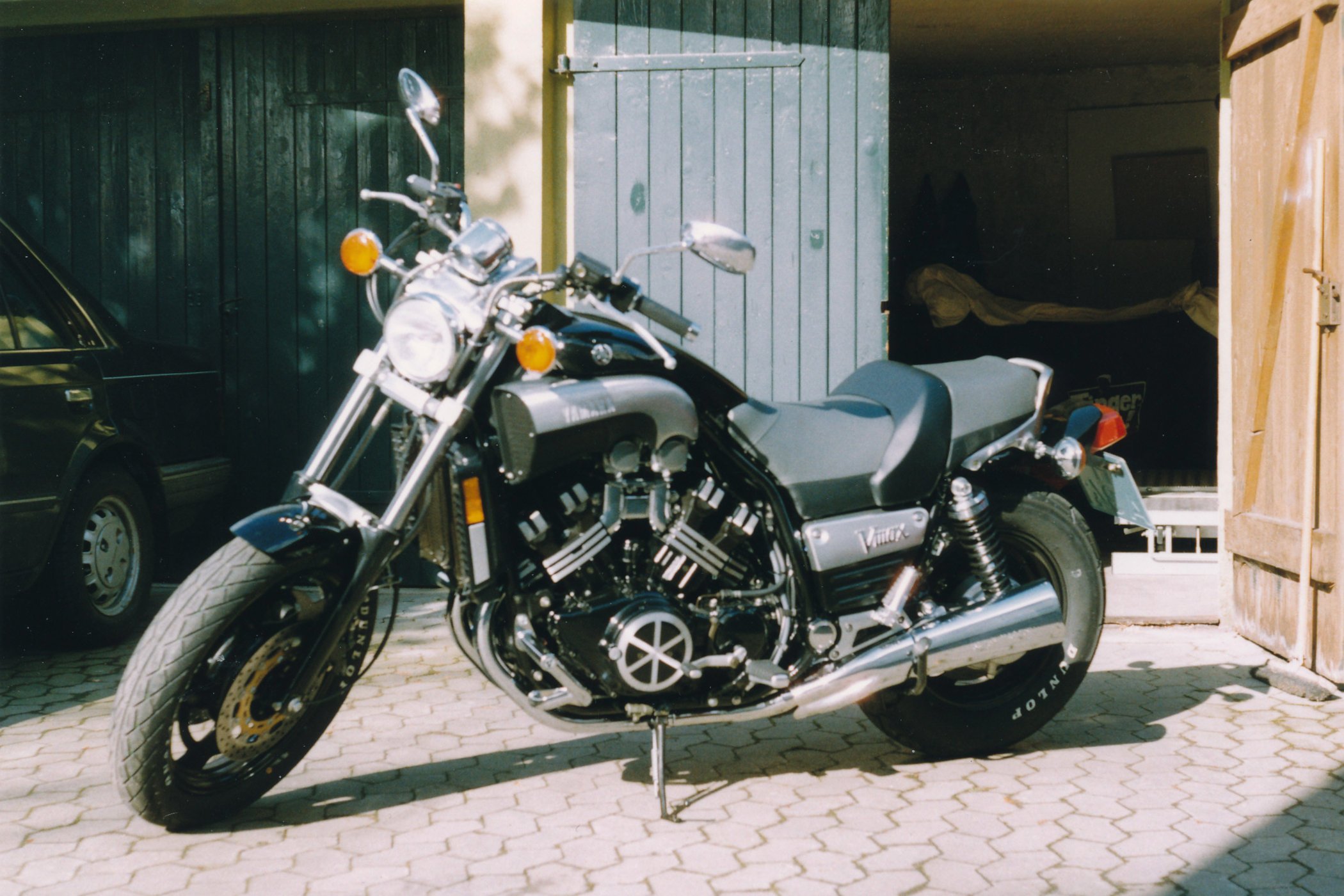
YAMAHA’S MAD V-MAX
Let’s start with the legend. The bike that most riders over four decades old think of when V4 madness is mentioned – Yamaha’s iconic V-Max. Released in 1985 with an emphasis on the American market, it was the poster child of muscle bikes with a 1,197cc V4 powerplant coupled with a shaft drive that pushed out 145 horsepower. It was extreme at the time, with styling straight out of an apocalyptic movie (yeah, Mad Max), designed by a small team led by Yamaha’s Akira Akari after witnessing a motorcycle drag race in New Orleans. It was a raw powerhouse without the computer aids we take for granted today – traction control, lean angle sensors and so on. Even antilock brakes weren’t introduced for motorcycles until 1988. Many media outlets called it “Bike of the Year”, and it remained relatively unchanged until 2007. Most updates in that 20+ year period were safety enhancements. Like muscle cars from the 1980s (and prior decades), it was ballistic in a straight line but a lacklustre performer otherwise. A massive engine and style were the selling points.
An all-new, redesigned V-Max was introduced in the summer of 2008 for the 2009 model year. A 1,679cc V4 was fitted into an all-aluminium frame and acted as a stressed member, while an advanced ECU, fuel injection, ABS brakes and slipper clutch were among the enhancements over the original. Power increased to a mind-numbing 197hp, and it was also a competent performer compared to its predecessor. Dramatic styling remained intact, with large air scoops under the handlebars and a power-cruiser stance. It was the bully of Harley Davidson.
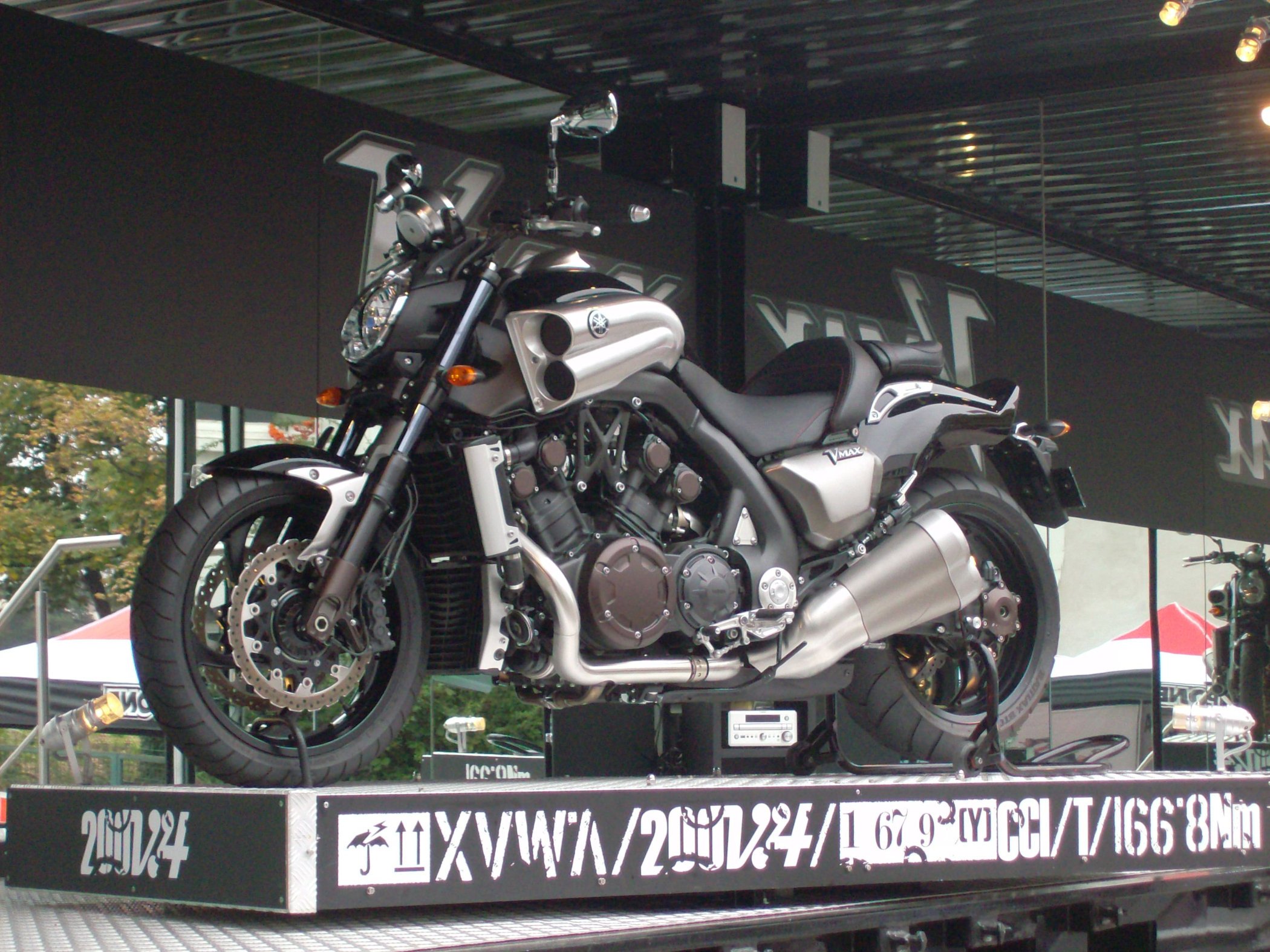
RADICAL 1930s MACHINES
Almost a century ago, V4 monsters were roaming the streets of Europe. At a time when Ford’s Model A produced around 40hp and topped out at 65mph, the V4 Matchless Silver Hawk was hitting almost 90mph. Introduced in 1930 for the 1931 model year, the Silver Hawk featured a 592cc V4 and was a phenomenon at the time. Both very fast and very expensive, the bike was ahead of its time, and production ceased in 1935. Matchless was a British company founded by Henry Collier, who designed the bike and was a true pioneer in his day. As is always the case, there was stiff competition.
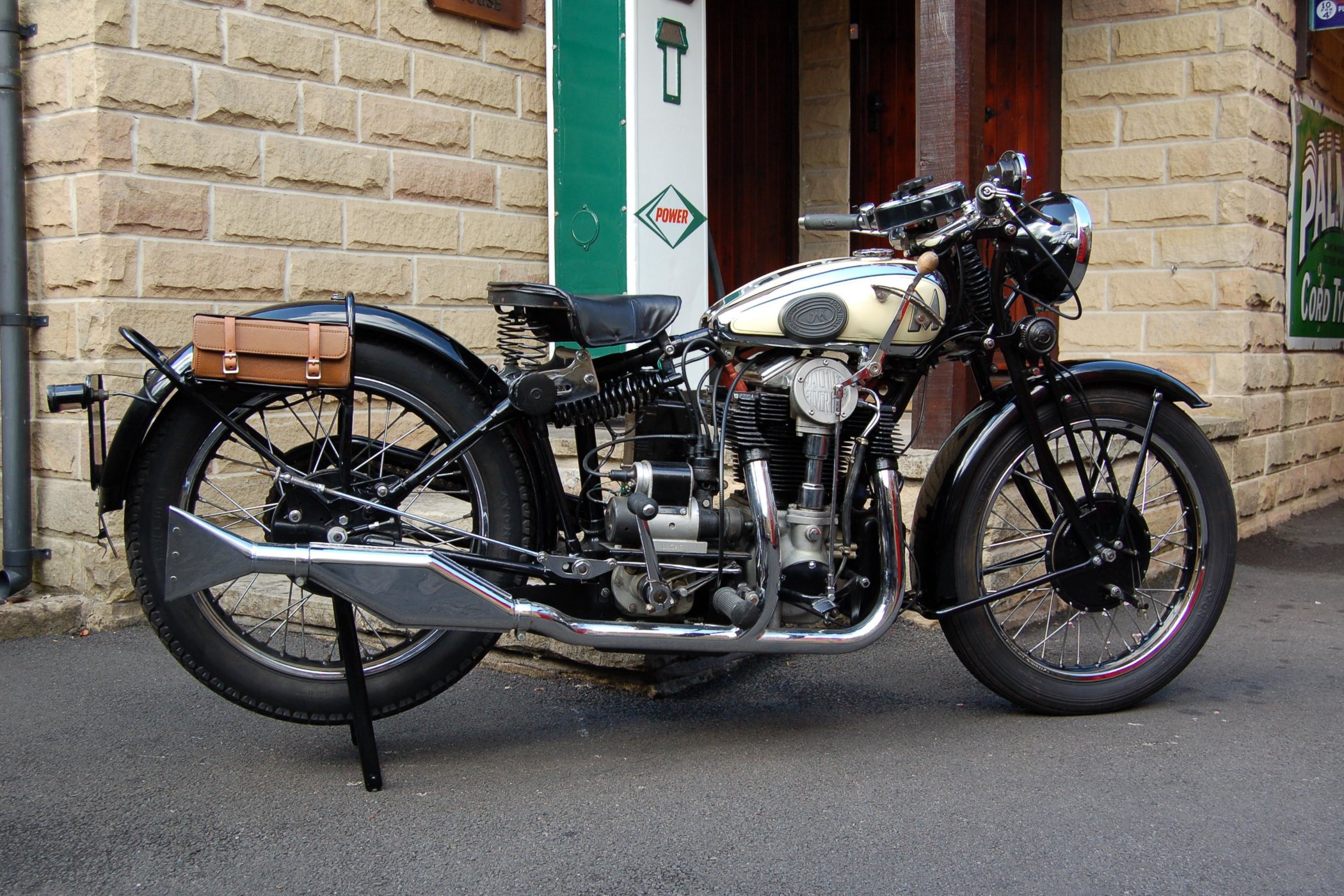
Brough Superior was the Rolls Royce of motorcycles in the 1930s and in a class of its own. Also a British manufacturer (the revived company is French today), it built a V4 prototype in 1927 that was the standout at European motorcycle shows. Its actual production bike in the 1930s used a straight four. However, that was a repurposed car engine from an Austin 7. Both bikes had more power than the Silver Hawk but were also built in very low numbers (again, one was a prototype) with prices rivalling an average annual salary. The ambition was definitely ahead of practicality.
AJS (A. J. Stevens & Co.) had the granddaddy of them all with a supercharged V4 race bike that first competed in 1939. It was “only” 500cc at inception but soon gained a supercharger and hit speeds well north of 100mph. It began life as an air-cooled experiment but morphed into a sophisticated water-cooled rocket with the help of British engineer Matt Wright. Predictably common for the time, it was unreliable given the extreme nature of the design and regularly overheated, despite the water-cooling apparatus. It still represented incredible engineering and the spirit of pushing the envelope and was the first motorcycle to exceed 100mph on a lap at the Ulster Grand Prix.
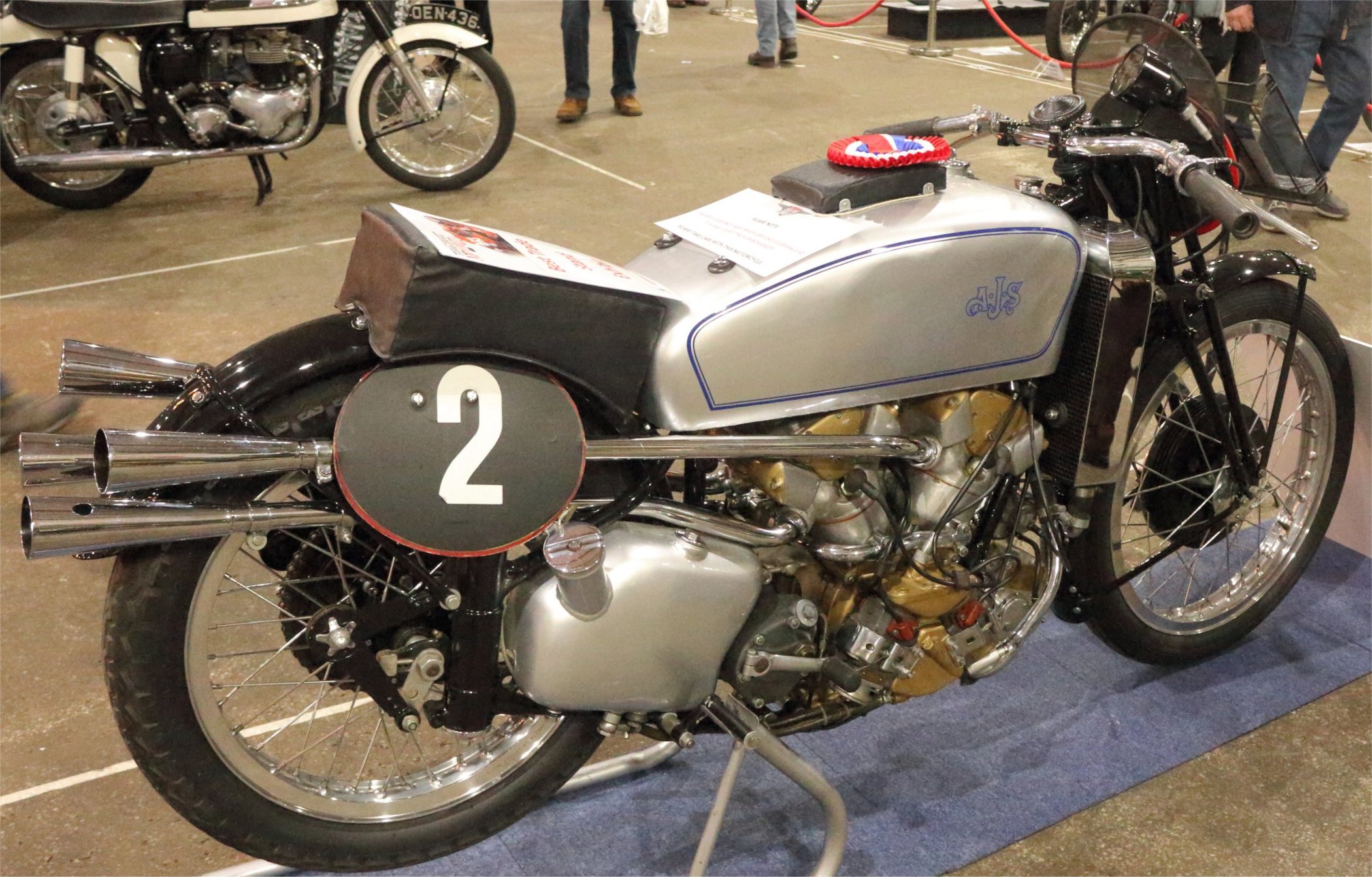
ITALY’S BEST OF THE BEST
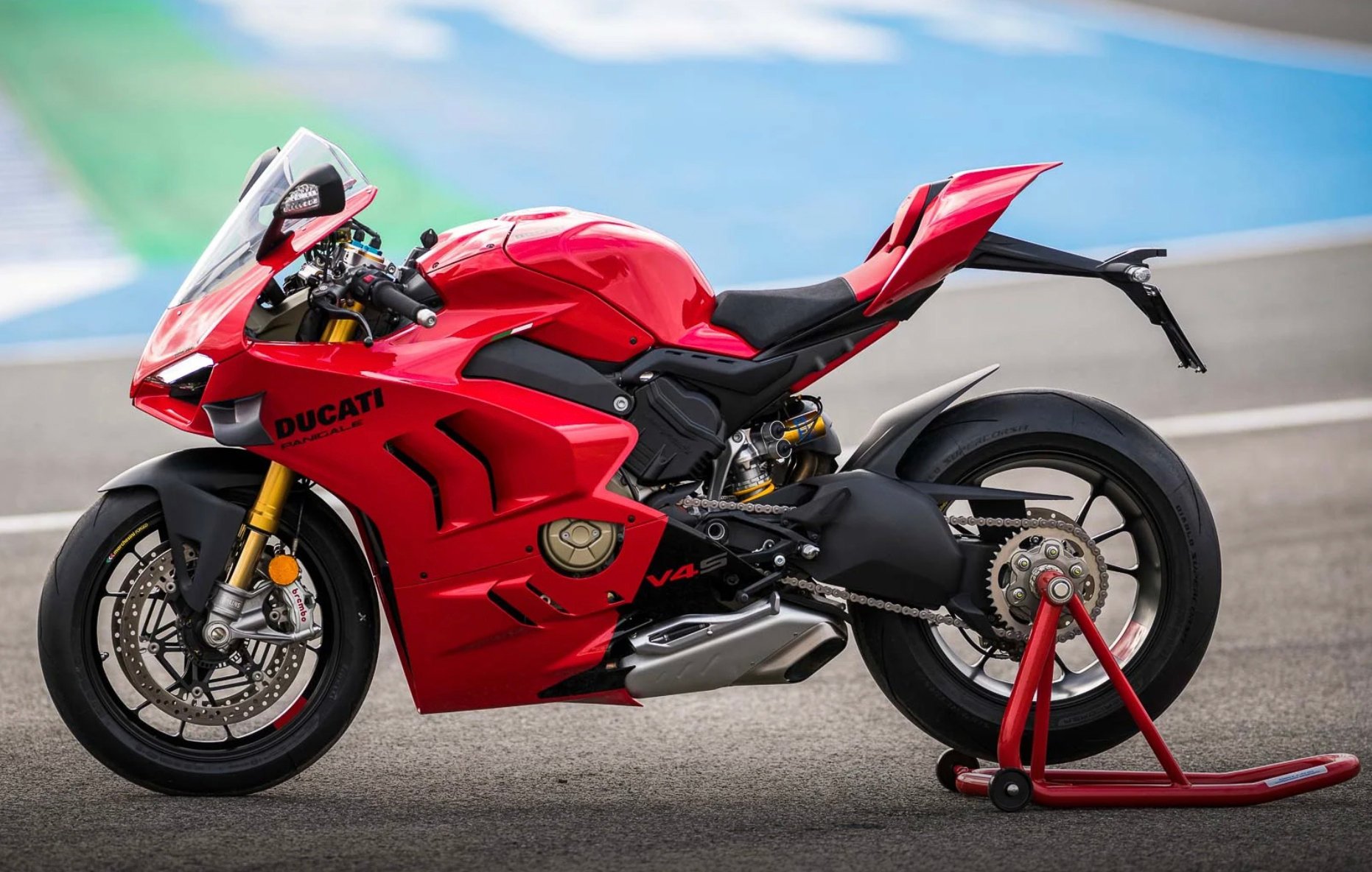
Today, Italy all but owns the V4 market with two players, Ducati and Aprilia. That’s not to say that there aren’t other V4s, but they don’t have the recognition or reputation of Italy’s finest. Honda had a smorgasbord of V4 machines in the last 20 years, such as the VF750C Magna and VFR800 Interceptor, but straight fours now dominate its performance line. The recently revived, failed and again revived Norton (rinse and repeat) has specialized in low-production V4 performance bikes with the V4 RR and V4 SS under prior ownership, and the current V4SV is based on those models. They aren’t quite as competitive as comparable bikes from Italy, but many consider them art on two wheels. If you’re not a wealthy collector, I’d suggest looking elsewhere, as it’s not exactly a price-to-performance winner at around USD 54,000.
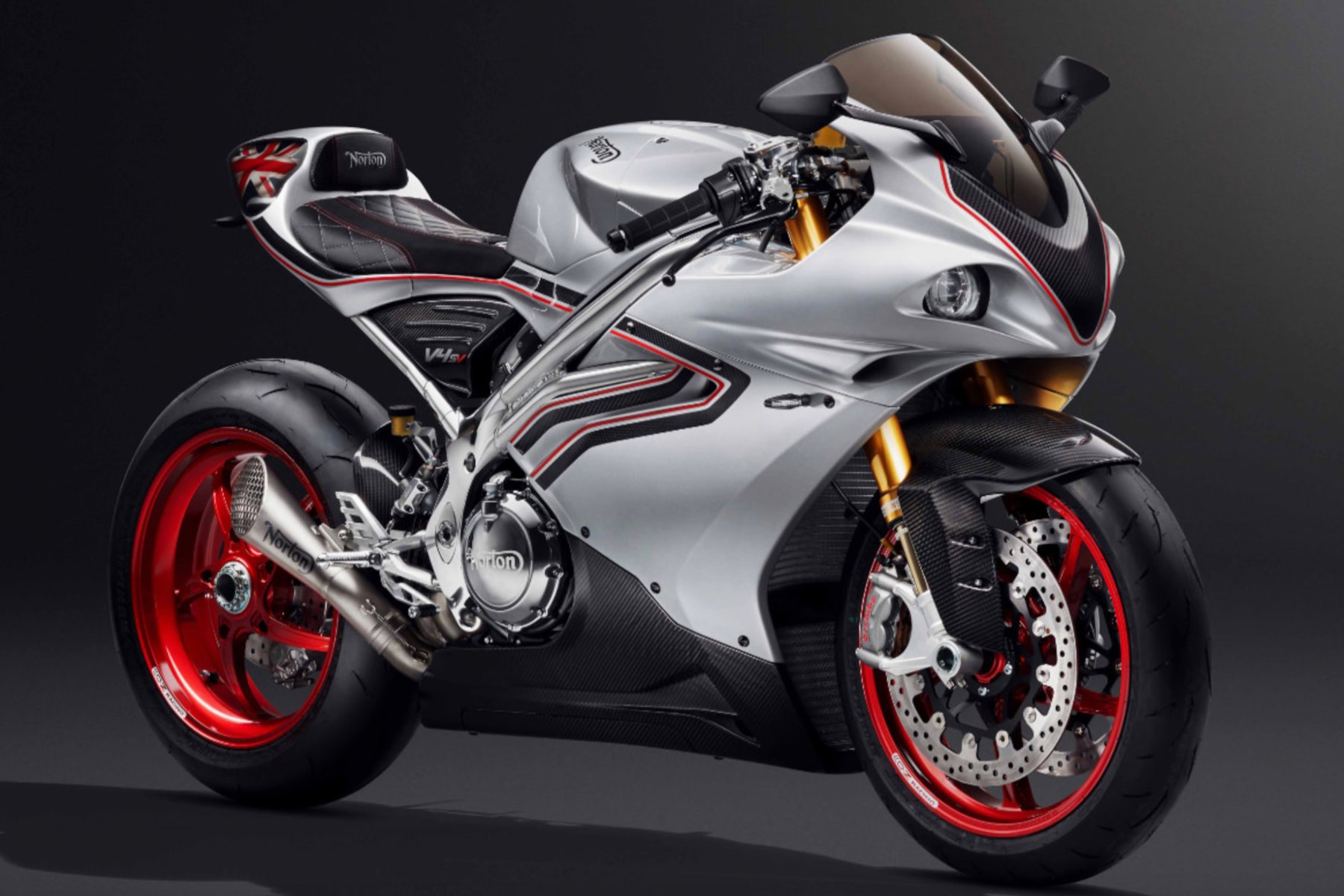
DUCATI
Ducati has several V4 models, including the Streetfighter, Panigale, Multistrada and most recently, the Diavel V4. Considered the Ferrari on two wheels, Ducati represents the pinnacle of performance bikes with a blend of power and character that you’d be hard-pressed to find elsewhere (although Aprilia is coming next). I own a 2022 Streetfighter V4, and it’s the best overall package I’ve had to date.
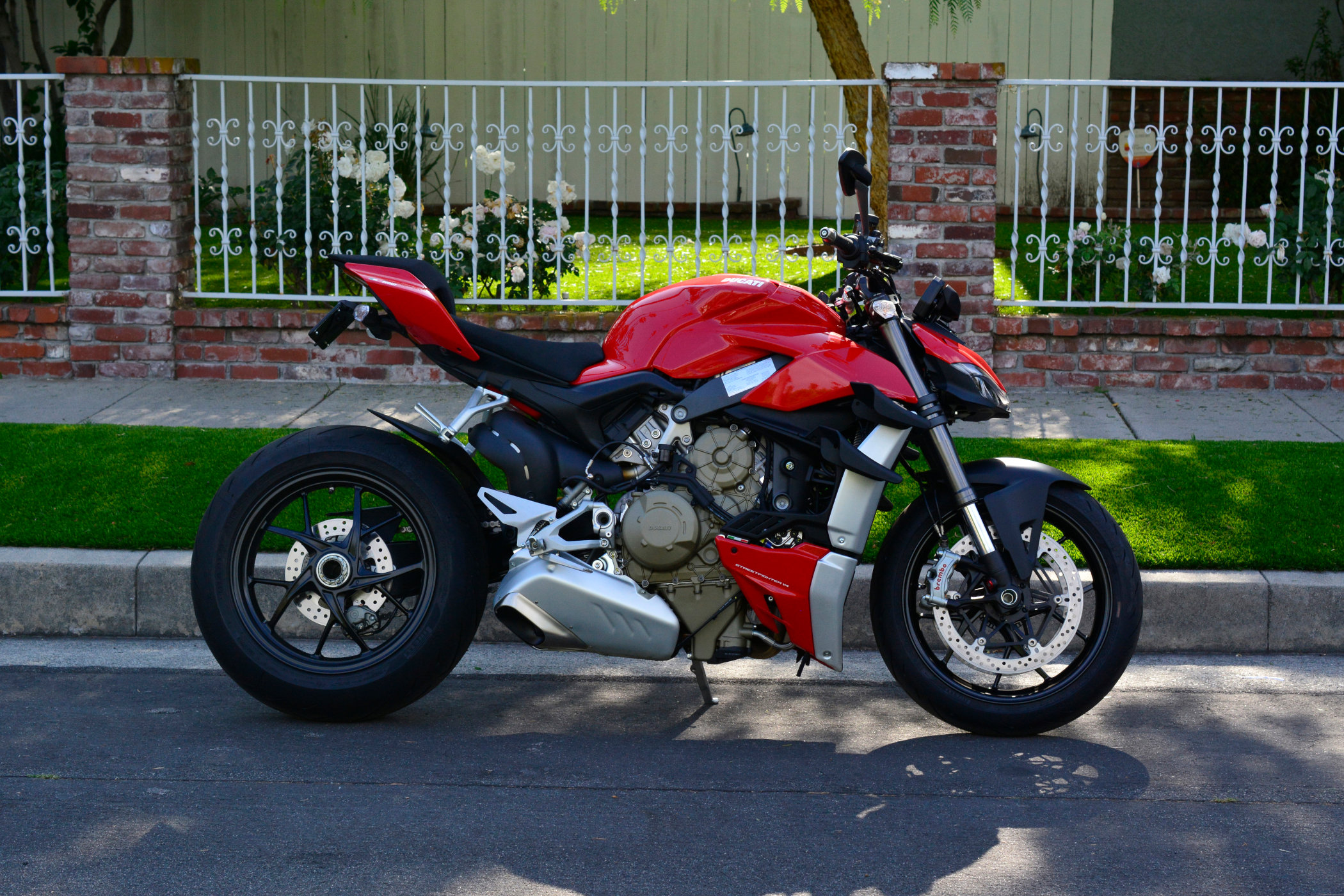
It’s arguably not the fastest bike I’ve owned, at least on the low end. That honour goes to the supercharged Kawasaki ZH2. Although my Streetfighter is an absolute weapon on the track, I prefer purpose-built middleweights like Kawasaki’s ZX-6R or Yamaha’s R6 on those days, but I’m also no MotoGP pro. And while its exhaust note is a true mechanical symphony, Aprilia’s Tuono V4 has the best-sounding exhaust (in stock form, mind you) I’ve ever heard from a V4. So, the Streetfighter might not be the best at everything, but all aspects considered, it’s the best naked bike you can buy. Performance, style, power and an undeniable cool factor are unmatched. Ducati’s Panigale is basically a supersport variant of the Streetfighter, and both represent the best of the brand. The Diavel V4 is a larger touring bike that still packs a performance punch (minus some power at 168hp), while the Multistrada is an adventure bike that can go off-road and still beat most bikes in a straight line.
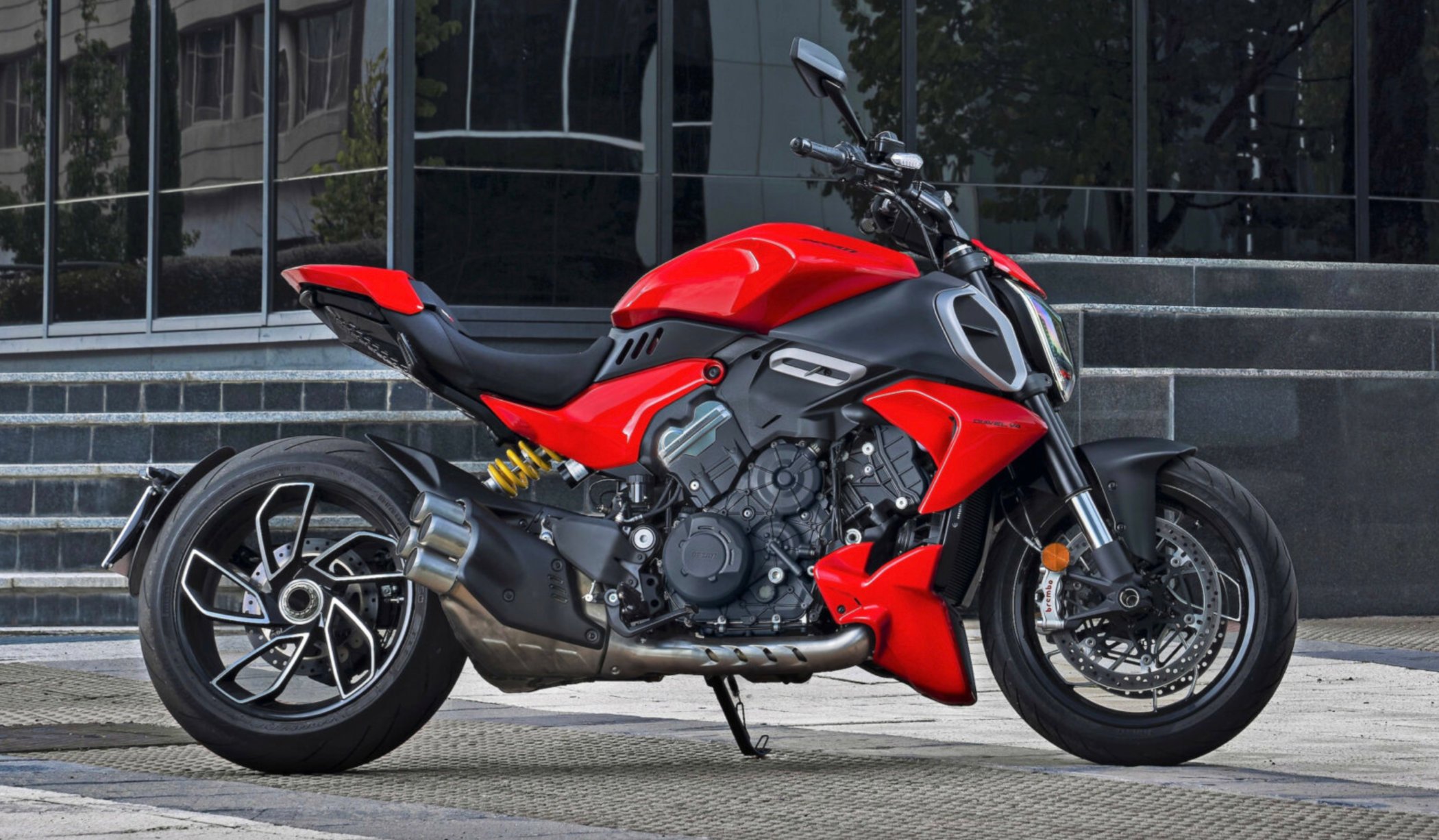
Specs are somewhat similar across Ducati’s V4 range, not counting higher-end special editions (like the Lamborghini collaboration), so I’ll focus on the bike I know best. The Streetfighter V4 has 208hp and a hair over 90 lb-ft of torque and weighs only 392 pounds. There are four winglets in the front that provide around 60 pounds of downforce at speed, so you don’t launch to Mars. The Desmosedici Stradale engine is a work of art, aesthetically and mechanically, and coupled with Ducati’s latest chassis and electronics suit, is as formidable as it gets. And being a more upright naked bike, albeit with a semi-aggressive position, it’s surprisingly comfortable on long rides. I definitely can’t say that about Supersports like the Panigale. Mine isn’t the upgraded S model with an electronic Öhlins suspension, but it still features fully adjustable Showa front forks and a rear Sachs shock absorber that more than meet my needs.
APRILIA
Aprilia can go toe to toe with Ducati’s best with the RSV4 supersport and Tuono V4 (the latter is a parallel to my Streetfighter). You get comparable power and performance with that untouchable Italian style and character, although Ducati shines brighter in most areas. Aprilia’s Tuono V4 pushes out 175hp and 89 lb-ft of torque. Blisteringly fast, but my Streetfighter has the edge on paper. The RSV4, however, pushes 217hp compared to the Panigale’s 215hp, so it’s basically a wash. Aprilia does win in the sound department, as mentioned, but Ducati’s audible rawness still wins me over. A bit of sloppiness can be a good thing, after all. Where Aprilia has the advantage is price, coming in a few thousand less than its Ducati rivals. And power figures aside, actually riding the Streetfighter and Tuono side-by-side reveals the law of diminishing returns. The Tuono doesn’t really feel slower than the Streetfighter, at least at the low end, despite a disadvantage of over 30 horsepower. At the end of the day, it comes down to personal preference with these Italian jobs – do you want a Rolex or Omega, so to speak?
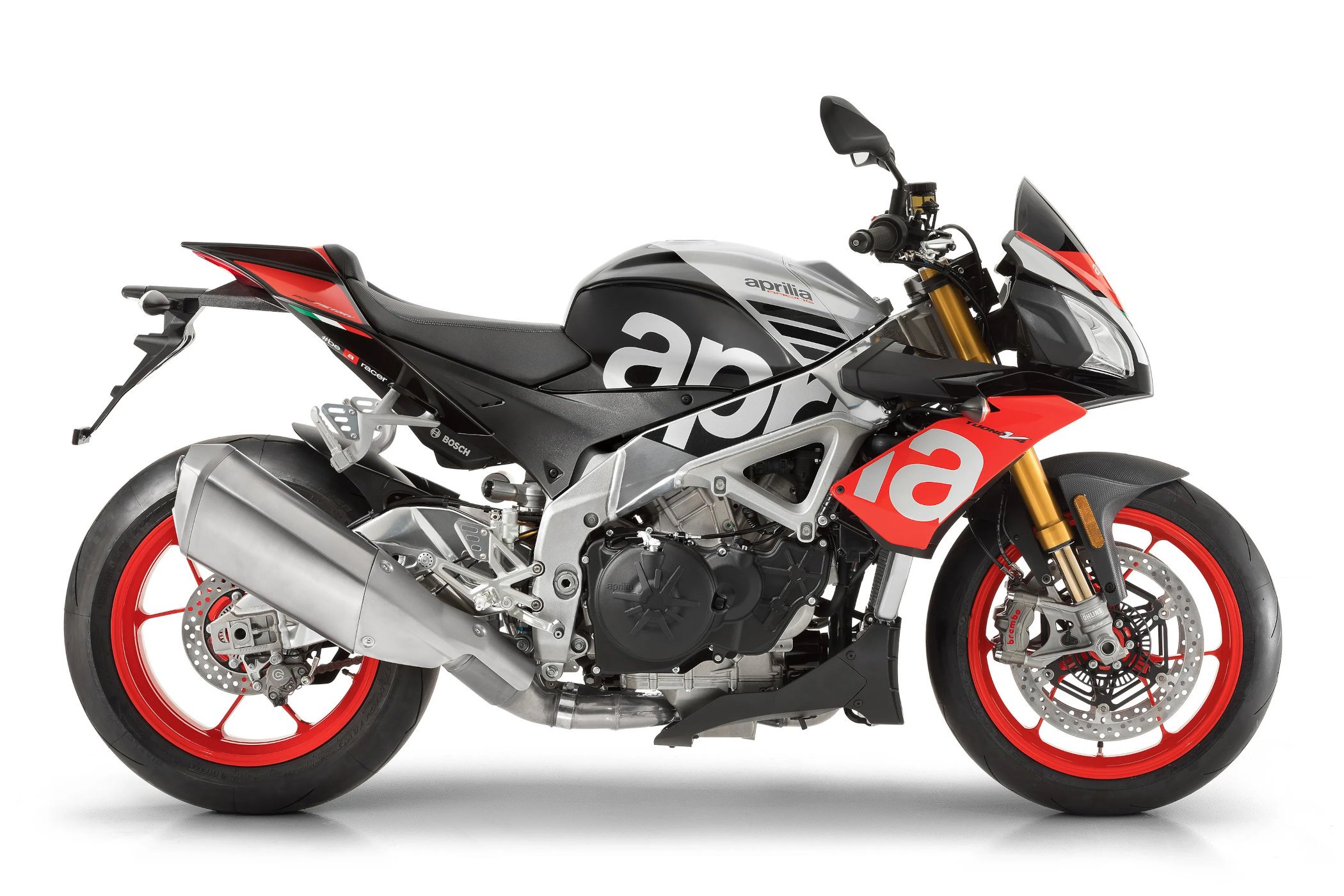
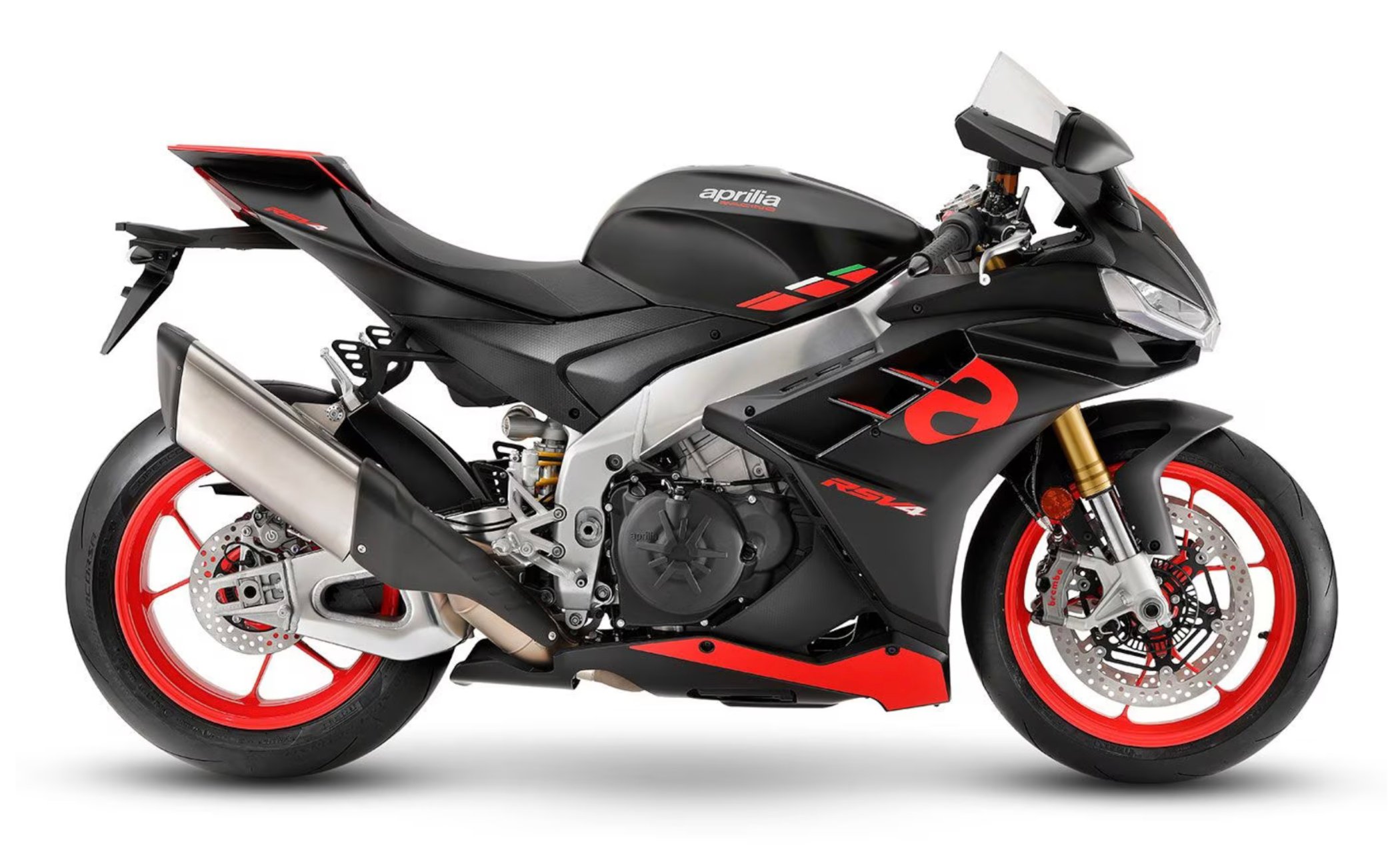
POWER COMES IN MANY FORMS
While V4 motorcycle engines are unique, blisteringly powerful and full of character, not unlike a Ferrari’s V8 or V12, other configurations are comparable in power. Straight fours from Japan are high-revving, wickedly fast powerplants with bikes like Honda’s Fireblade at 215hp, Kawasaki’s Ninja H2 (supercharged) at around 220hp and Yamaha’s R1 at 197hp. Then you have triple-cylinder beasts like Triumph’s Speed Triple 1200 RR with 177hp and even MV Agusta’s Brutale 800 RR with 140hp from a much smaller 798cc engine. As a side note, MV Agusta is the third Italian brand with exotic superbikes, but they specialize in straight three and four engines, not V-twins or V4s.
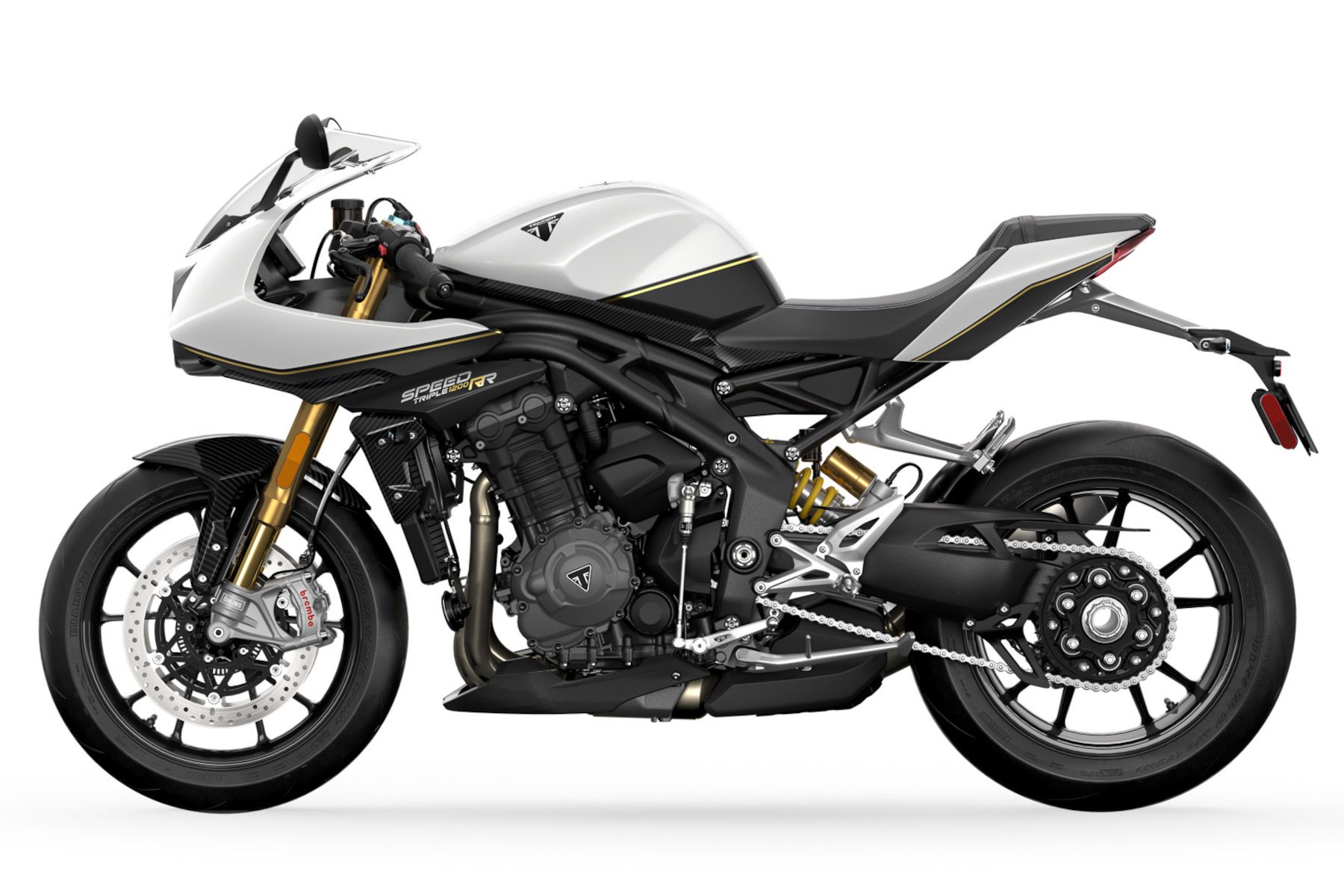
As mentioned at the top, this is the latest golden age of motorcycles. Power and performance have never been better, and there’s a wide selection of engine types to choose from. We’ve lost some classics from stricter regulations, like Harley’s traditional Sportster line, but manufacturers have been forced to innovate and adapt, and they’ve exceeded expectations. I’ve been riding since I’m 10 years old, so I have a few decades under my belt, and can confidently say that there’s nothing quite like a V4.
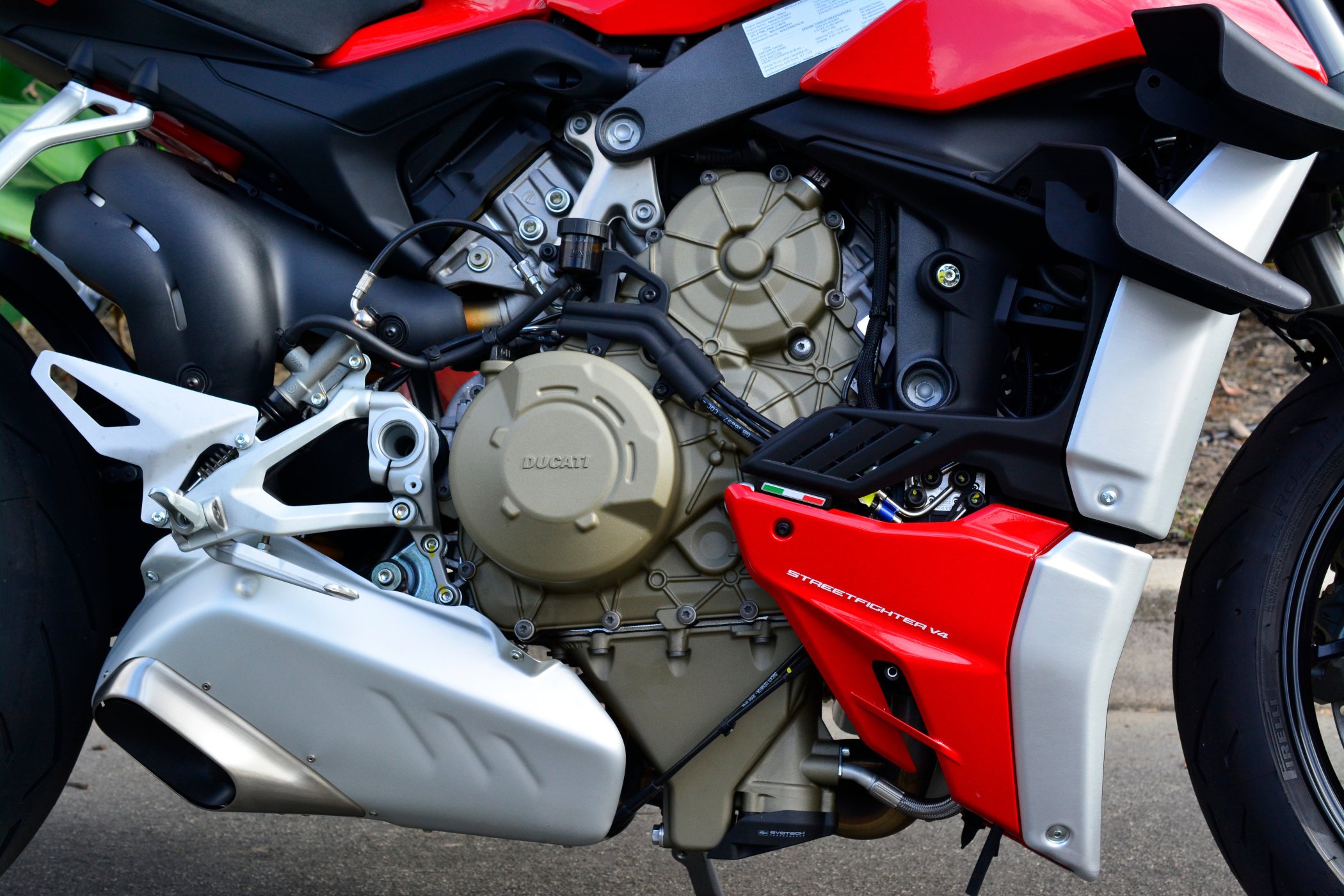
A few others may be a hair faster, many get better gas mileage, and some are less expensive with comparable power specs, but motorcycles aren’t single-minded machines. They’re a blend of speed, performance, electronics (technology), sound and character, and nothing defines those more than Italian V4s.
Editorial Note: All images of the Ducati Streetfighter V4 and the Desmosedici Stradale V4 engine are taken by our editor Erik Slaven. The other images portrayed come from various sources, each mentioned in the caption below the image.




13 responses
Wonderful engines all, but no discussion of V4s should ignore Honda.
@James H Honda was mentioned, but if I went in-depth, the article would’ve exceeded a comfortable length. Thanks for the comment
200 hp+ for the road is stupid.
I’d argue it is for the track, too.
RVF400 is where it’s at!
@Hubertje Coupled with a brilliant electronics package, 208hp makes a lot of sense for experienced riders that like excess. Of course it’s unnecessary, but having such power on tap is a thrill that never gets old. As far as track riding, I personally prefer purpose built middleweights as mentioned in the article. Kawasaki’s ZX-6R is the best track bike in my opinion.
@Erik Slaven
Been there, done that.
The only reason to have that much power is bragging in the bar, or compensating for something.
Even with loads of experience, it’s more fun to ride a slow bike fast than to ride a fast bike slow.
@Hubertje To each his own. Enjoy riding your slow bike fast 👍
I have a 92 vfr750 and I just love it. It has enough power and comfort and agility to make riding a pleasure. Thirty years old and my Honda is still going strong
To gloss over Honda’s V4 motorcycles in barely a sentence is a glaring omission. At the very least, give the legendary RC30 VFR750 a paragraph. Honda, almost more than any other motorcycle maker, made the V4 engine format their own. Come on, give credit where it’s due…
@Michael I don’t disagree that Honda definitely embraced V4s and I did mention it, and it was a conscious decision to gloss over it as they solely focus on straight fours in the sport/super bike category now and the article was already getting long. The VFR750 was also produced in very limited numbers, very expensive and generally a race bike. Power ranged from about 75hp in Japan to less that 120hp in the West. It was a great bike, but not exactly a show stopper when compared to earlier bikes like Kawasaki’s GPZ900R that debuted in the early 80s. A Honda Petrolhead Corner, however, could very well be on the way and i would do them justice.
@Sandon Very cool!
Just to say @Erik Slaven, that I did really enjoy your well written article – despite the lack of Honda VFR, RVF, and Pan-European coverage 😉 – and I much look forward to your future Honda article!
Also, it’s interesting to note that the comments on this article seem far more thoughtful and considered than the comments on a great many of Monochrome’s watch related pieces.
@Michael I really appreciate that.
KAT Engineering is a leading Fuel Bowser Manufacturers in India and involved in manufacturing of a high range of Tanker Truck fabrication which include Autom.